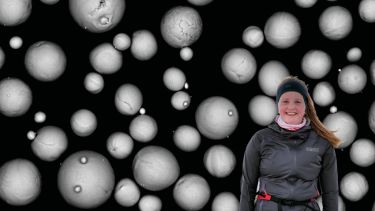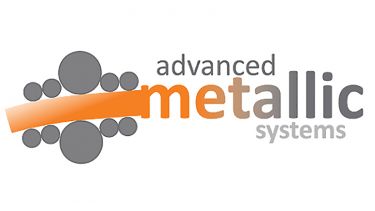Summary
- Royce at the University of Sheffield equipment has supported research which will accelerate the development of additively manufactured high entropy alloys for high temperature applications.
- Research led by Lucy Farquhar, AMS CDT PhD Researcher, aims to address a key manufacturing challenge faced by the aerospace sector.
- Efficiency throughout the supply chain is key to reducing emissions and costs for airlines. A method of ensuring efficiency is the development of novel materials and exploring ‘smarter’ construction methods for components.
- If this research bridges the knowledge gap, project outcomes are expected to establish a strong foundation for further development in the area. Subject to further R&D, this project is expected to pave the way for generating long-term value throughout the whole-supply-chain for Boeing UK.
Introduction
A project led by Lucy Farquhar, PhD Researcher in the Advanced Metallic Systems Centre for Doctoral Training Programme at The University of Sheffield, will accelerate the development of additively manufactured high entropy alloys for high temperature applications. With the output of the research tailored towards the aerospace industry, the project aims to address a key manufacturing challenge faced by the sector.
The project works collaboratively with Boeing Research and Technology. Lukas Jiranek, Materials and Processes Engineer (Additive Manufacturing), Boeing UK, alongside Professor Iain Todd, Director, MAPP - EPSRC Future Manufacturing Hub, and Professor Russell Goodall, AMS CDT UK Director, The University of Sheffield, are involved in the research development.
Understanding Additive Manufacturing for Aerospace
Additive Manufacturing (AM), also known as 3D printing, for metals is defined as ‘the layer-by-layer manufacturing of parts from 3D model data’. The technique offers many advantages over more traditional manufacturing technologies; the ability to selectively deposit materials only where they are needed means that parts can be much more complex in design and lighter weight, which can dramatically improve performance.
For many years, the aerospace industry has been preoccupied by manufacturing challenges, with limited capacity, complex geometries, strength requirements, and temperature resistance requirements in need of further investigation. Both industry and academia focussed on the aerospace industry have noted the value of additive manufacturing, and many are looking to strategically implement AM for various manufacturing processes.
Underpinning research
This research builds upon previous studies completed by the MAPP - EPSRC Future Manufacturing Hub (‘right-first-time manufacturing’, ‘process monitoring and control’, and ‘predictive methods to be used on alloys’) which provided the foundation for the new advancements proposed in this project. The project also builds upon ‘proof-of-concept’ testing undertaken by Lucy Farquhar, The University of Sheffield, prior to establishing the direction of the research.
Through a powder sample provided by MAPP - EPSRC Future Manufacturing Hub, key findings were identified through the in-situ alloying of elemental powders using CoCrFeNi powder - of which Cu and Ti were combined with the CoCrFeNi powder - to examine the resulting microstructures.
Through the build on the Henry Royce Institute provided Aconity3D MINI equipment, Lucy was able to determine to what extent the additional element was alloyed to the CoCrFeNi powder. This resulted in a paper published by MDPI in the Journal ‘Metals’ titled ‘In-Situ Alloying of CoCrFeNiX High Entropy Alloys by Selective Laser Melting’.
This informed the project direction, of which aims to design high entropy alloys that can be manufactured through Additive Manufacturing, as well as being tailored specifically to operate under the high temperatures present in a jet engine.
The proposed outcome to be produced, following the vast scope of alloy research and development [R&D], is a heat exchanger. A heat exchanger has been identified as a suitable output for AM as the component contains multiple internal channels and features in order to direct air flow and extract heat efficiently.
Why is this important?
Efficiency throughout the supply chain is key to reducing emissions and costs for airlines. A method of ensuring efficiency is the development of novel materials and exploring ‘smarter’ construction methods for components.
Currently, superalloys are used for most high temperature jet engine applications due to the properties being high strength and having a long fatigue life, combined with their good resistance to oxidation and corrosion at high temperatures. The high strength and durability of these superalloys is a result of numerous manufacturing stages which contribute to increased labour and energy output. By utilising Additive Manufacturing as an alternative, the manufacturing stages required would significantly reduce, which consequently reduces additional factors such as energy output.
Previous research has found that many conventional superalloys did not perform to the required standard when manufactured by AM, with many tests finding cracking in the samples. In a bid to address this issue, Lucy Farquhar, in collaboration with Boeing UK, is exploring a range of high entropy alloys strengthened with varying methods.
The project aims to discover whether high entropy alloys would be more suitable for AM techniques. If proven, the research will assist in reducing the mass of components and reduce material wastes when manufacturing, whilst also generating materials properties comparative to the high strength and durability of currently used superalloys.
If this research bridges the knowledge gap, project outcomes are expected to establish a strong foundation for further development in the area. Subject to further R&D, this project is expected to pave the way for generating long-term value throughout the whole-supply-chain for Boeing UK.
Current findings
Although the project is still ongoing, significant findings have been identified through the research completed to date, which makes for a promising outcome at completion.
Theoretical modelling has been utilised to design high entropy alloys (HEAs) for high temperatures. Taking the nine most promising alloy combinations, Lucy was able to make samples through Arc Melting (Edmund Bühler Compact Arc Melter MAM-1, Quarrell Lab, School of Chemical, Materials and Biological Engineering, The University of Sheffield) equipment.
From the nine initial compositions, four out of nine were discarded as their microstructure was not suitable for Additive Manufacturing, leaving five possible HEAs to explore.
The five successful HEAs were then subject to welding trials - plus the CoCrFeNi based alloys for reference samples (as mentioned in underpinning research) - of which two of the novel high entropy alloy combinations showed excellent weldability. Those HEAs containing TiVNbMo and TiZrNbMo were deemed to be the best performing at this point in the study.
It’s been great to have an industrially focussed direction for my PhD project, especially when I can foresee the benefit of this research on a larger scale for the aerospace sector. Working directly with Boeing has been beneficial in terms of the knowledge transfer and feedback provided by my industrial contact, Lukas, and I’m extremely optimistic about the project outcome. If my research demonstrates that good weldability directly transfers to processability in Additive Manufacturing, then this is will be a very exciting discovery in materials research!”
Lucy Farquhar
AMS CDT 2019 Cohort | The University of Sheffield
Equipment access
Through access schemes, the project has utilised the following equipment based at both The University of Manchester and The University of Sheffield.
Aconity3D MINI, Royce Discovery Centre, Royce at the University of Sheffield
Scanning Electron Microscopes (SEM), Sorby Centre for Electron Microscopy, Kroto Research Institute, The University of Sheffield
Thermal Gravimetric Analysis with Mass-Spectrometry (TGA-MS), Royce Hub Building, Henry Royce Institute
Edmund Bühler Compact Arc Melter MAM-1, Quarrell Lab, School of Chemical, Materials and Biological Engineering, The University of Sheffield
What’s next?
Following the outcomes of previous testing, two weldable HEAs are currently being manufactured from the pre-alloyed powder compositions. These will be ready for build trials which will determine whether they can be successfully manufactured through AM.
Alongside this, elemental powders of the TiVNbMo alloy are going to be utilised to complete similar trials to those noted in previous findings (more specifically, mixing the elemental powder of the four elements in preparation for a part being built with the powder mix). This will allow for a comparison to be made regarding the microstructures of parts constructed by pre-alloyed powder and by in-situ alloying.
The final product (heat exchanger) will be constructed following the assessment of the testing by selecting the most successful powder of the two weldable high entropy alloys; an output which encapsulates the scope of the project.
With the rise in popularity surrounding Industry 4.0, Additive Manufacturing is becoming a more widespread route for production. The research carried out in this project hopes to redefine the direction of the aerospace manufacturing supply chain by proving that the adoption of high entropy alloys for high temperature materials solutions is possible.


